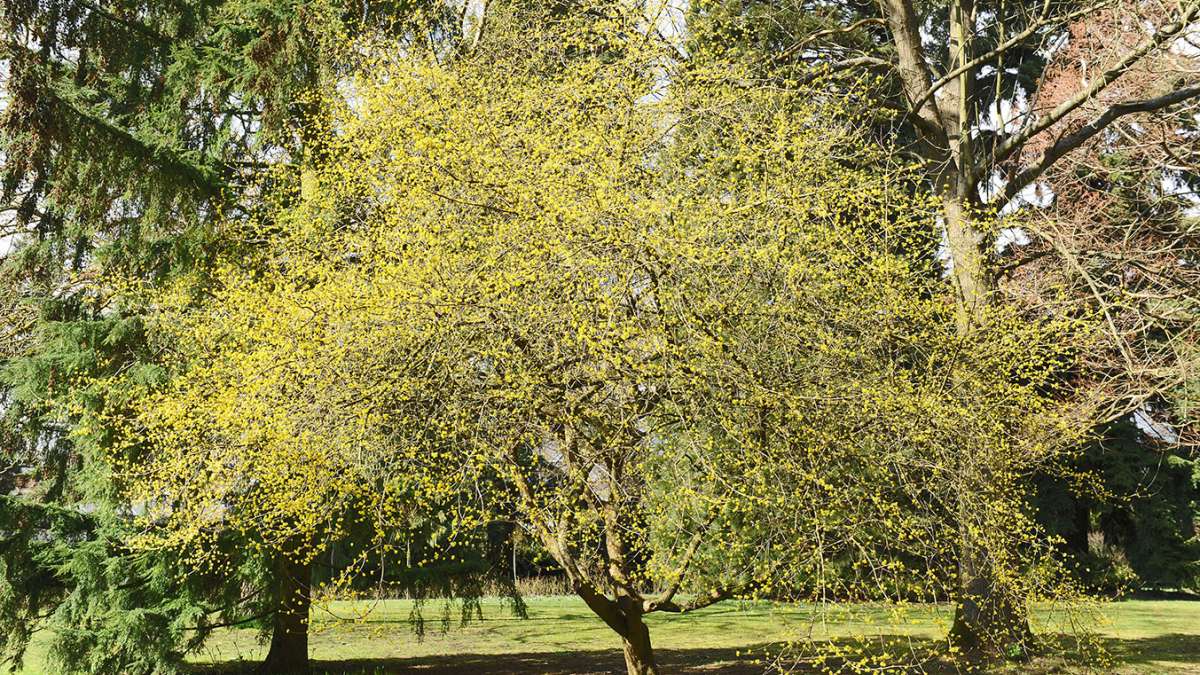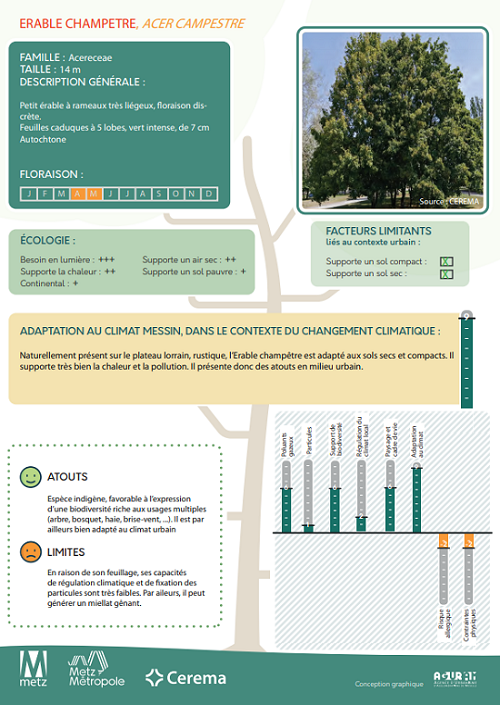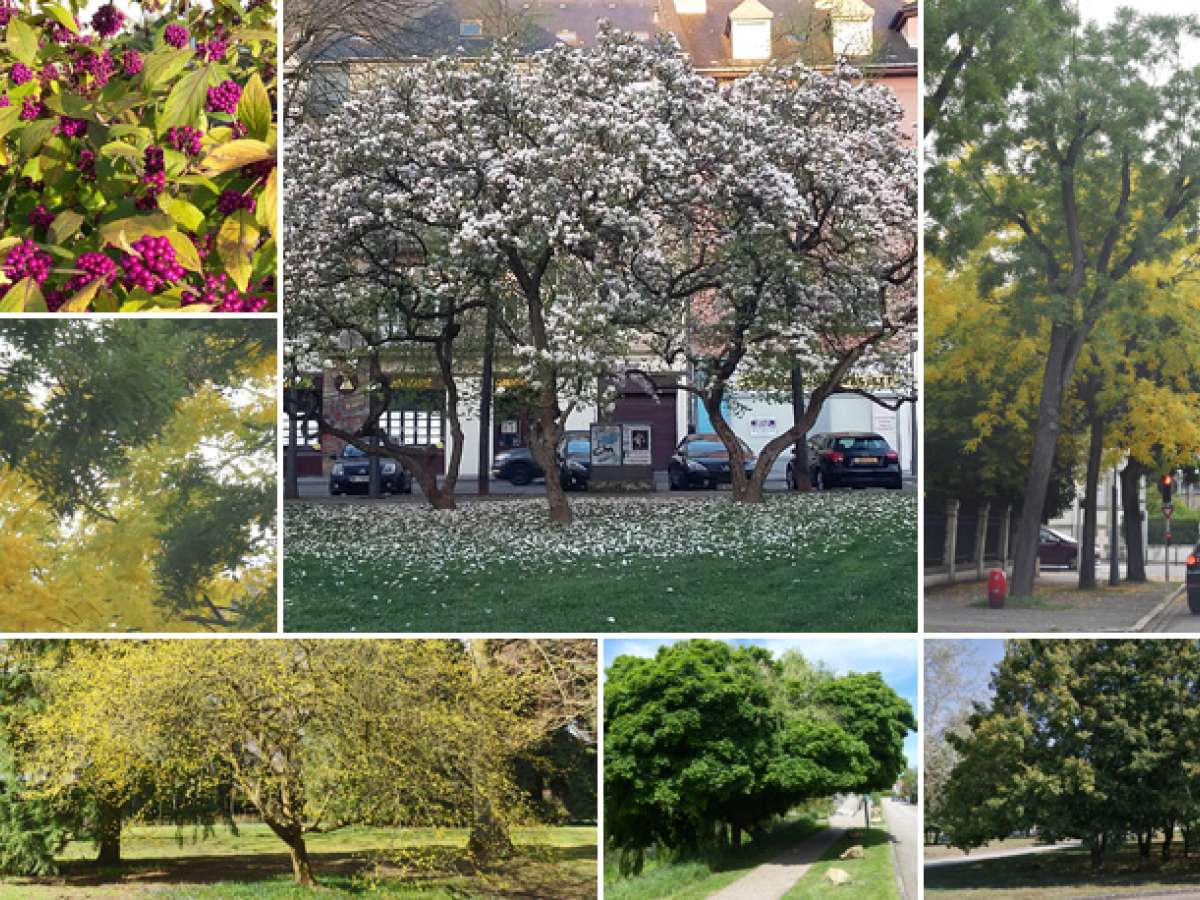This article is part of the folder : SESAME : Intégrer l'arbre dans les projets de renaturation urbaine
See the 13 news related to this folder
 What trees to plant today for the cities of tomorrow? How to ensure their preservation?
What trees to plant today for the cities of tomorrow? How to ensure their preservation?
With Metz Métropole and the city of Metz, Cerema has provided concrete responses through the SESAME project: a study and analysis of the ecosystem services provided by 85 local species in the current and future climate context.
The city of Metz has put 85 fact sheets on regional tree and shrub species online.
For each tree, the fact sheet presents a score from 1 to 10 for several criteria: impact on air quality, fixation of fine particles, local climate regulation, adaptation to local climatic changes, impact on the urban landscape, hosting biodiversity. The "negative" aspects (allergies, surface roots, etc.) of trees are also evaluated.
The sheets also specify whether the species is able to adapt to compact or dry soil.
strategy
Consider the urban tree from the perspective of the services it provides us
How does it contribute to maintaining and developing biodiversity in urban areas? How and to what extent does it contribute to air quality? What mechanisms are in play for its contribution to local climate regulation and to the fight against heat islands? How can we understand its landscape role?
The study, centred on the Metz metropolitan area, examines the characteristics of 85 species of trees, shrubs and climbing plants, and their abilities to meet these expectations. In-depth discussions took place with the city's management services.
For each species, services rendered
Indeed, under favourable growth conditions, not all of these plants are equal: the morphology of the tree, the structure of its crown, its leaves, its roots, its ecology or its appearance make it interesting vis-à-vis some services, but not all. For example, a birch, which has strong landscape or biodiversity benefits, is not very effective in terms of climate regulation due to the nature of its foliage, and its pollen is allergenic.

Urban tree, city and climate change
The city is a very difficult environment for trees: redevelopment, unstructured and compacted soils, poor water supply, drought, heat, injuries, etc. The predicted climate changes will make it even more difficult. The study therefore sought to identify, in the context of the city of Metz, those species both suited to the local identity, to the Lorraine climate which can remain harsh, to the difficult conditions inherent to the urban environment, and to the expected climate changes.
Constraints that must be clearly identified
The study was also interested in the constraints that plants can themselves represent: firstly, the risk of allergies, but also the brittle branches, the deposit of honeydew, the fruits which can cause damage, the roots that can potentially intrude on underground networks or lift the surface coatings. …
Again, not all species are equal. A good knowledge of the constraints linked to a species also means promoting its good cohabitation with humans, along with the full expression of the desired long-term services.
Guidelines for the management of urban trees
Urban tree and shrub management techniques, favouring their long-term survival and the expression of desired services, have made considerable progress. The study offers a number of operational guidelines for managers.
Results
The result of this partnership work carried out with the communities, resulted in the finalisation:
-
Of a study report;
-
Of a series of 85 “species fact sheets”;
-
A computer application (Excel 2010 or later) and its detailed instructions, providing assistance in the selection of species according to the issues identified, upstream of one or more projects.
Caution: these tools are adapted to the climatic, ecological and landscape context of the Metz metropolitan area. They were not designed for another context.
Becoming a partner
Cerema is currently studying the modalities of adapting this work to other contexts and is looking for new partners (communities, public establishments, etc.) to develop its expertise.
Download the study
In the folder : SESAME : Intégrer l'arbre dans les projets de renaturation urbaine

